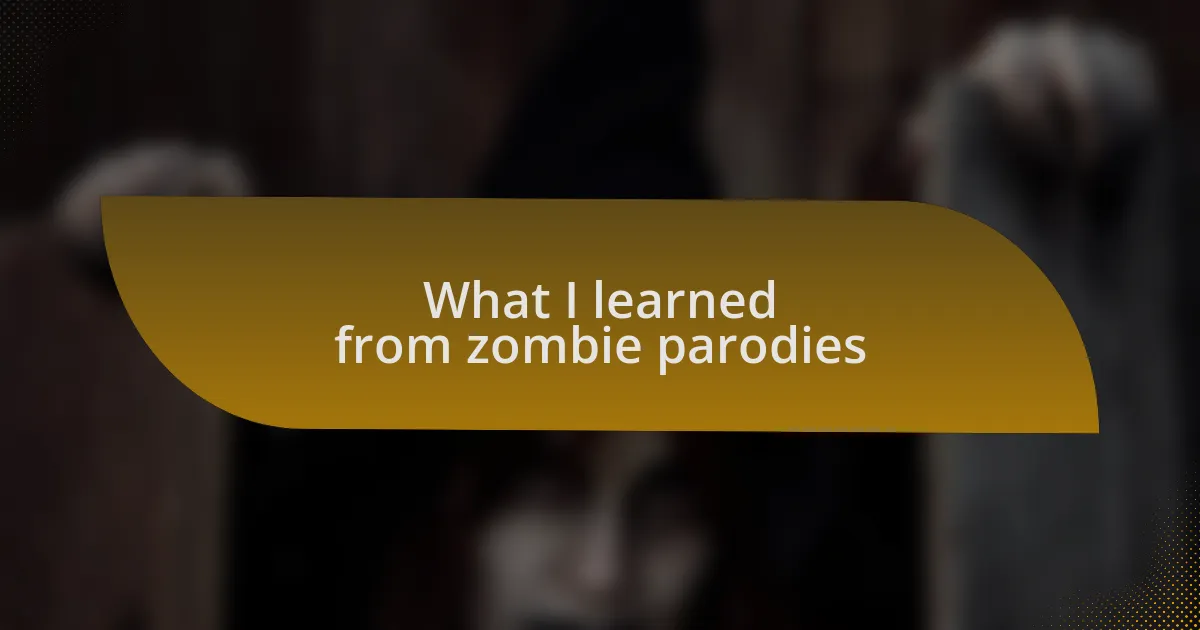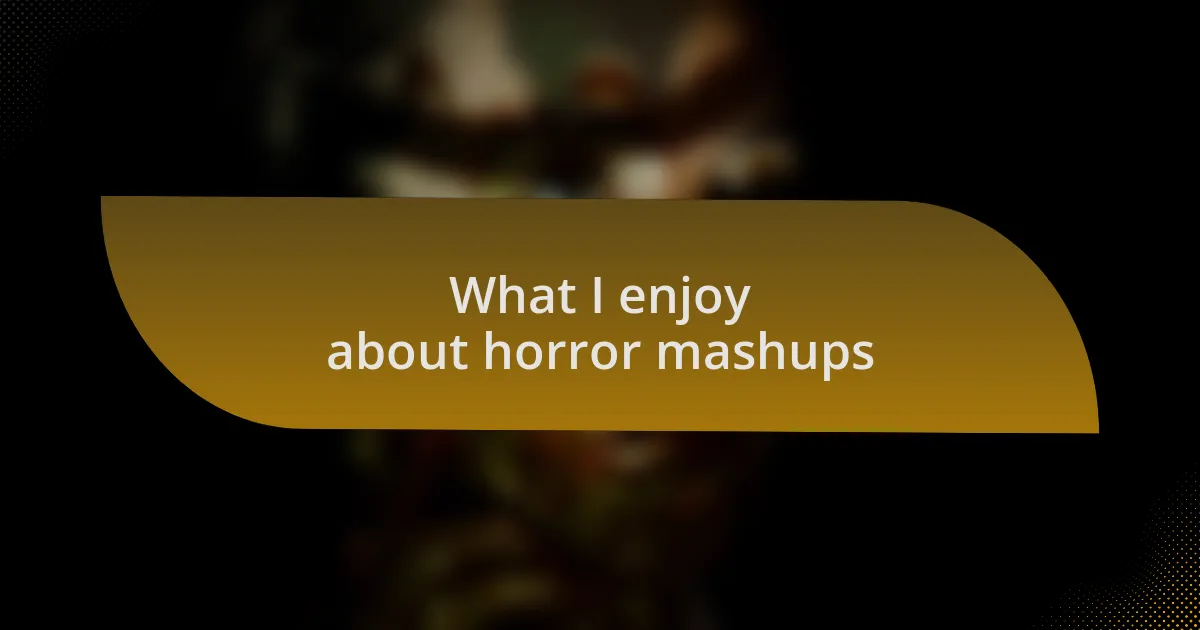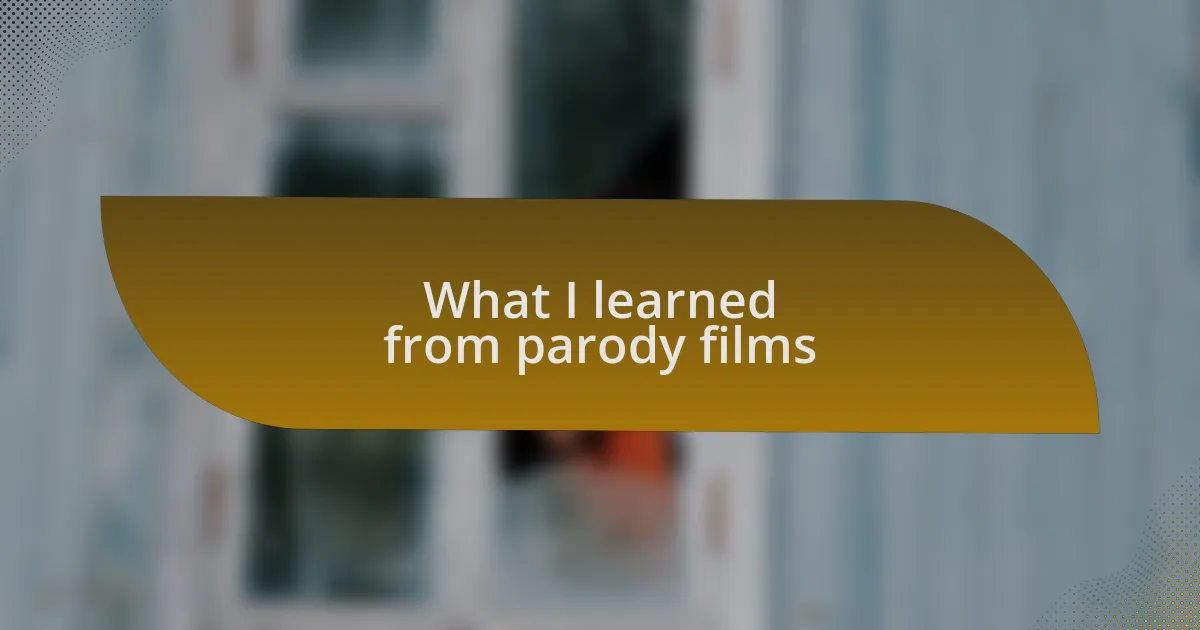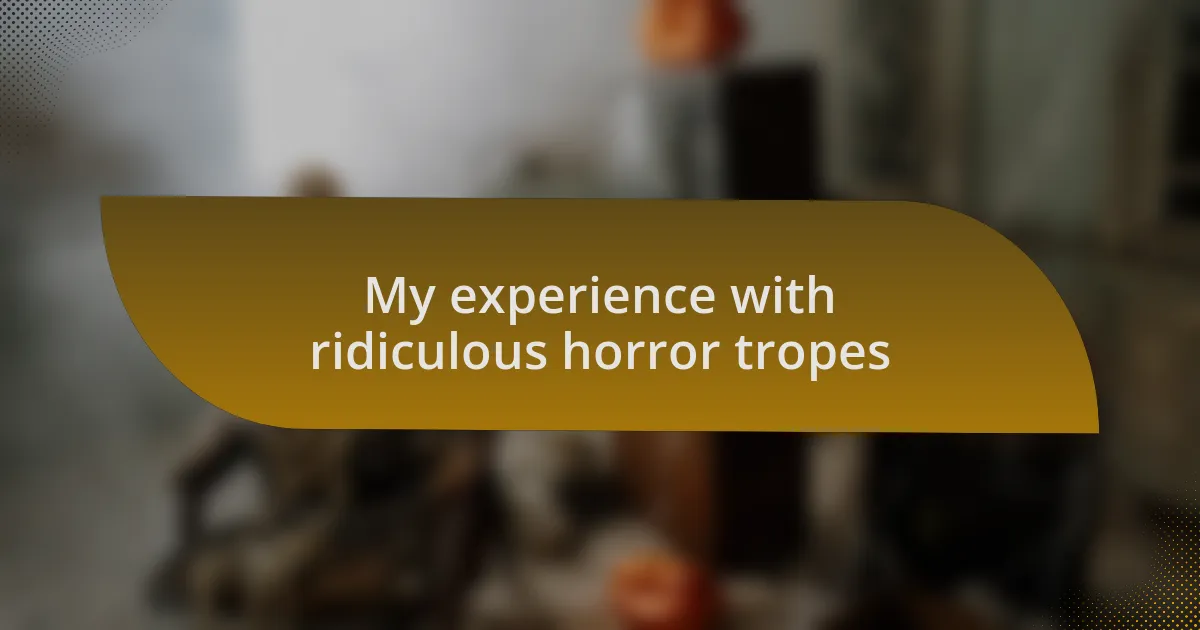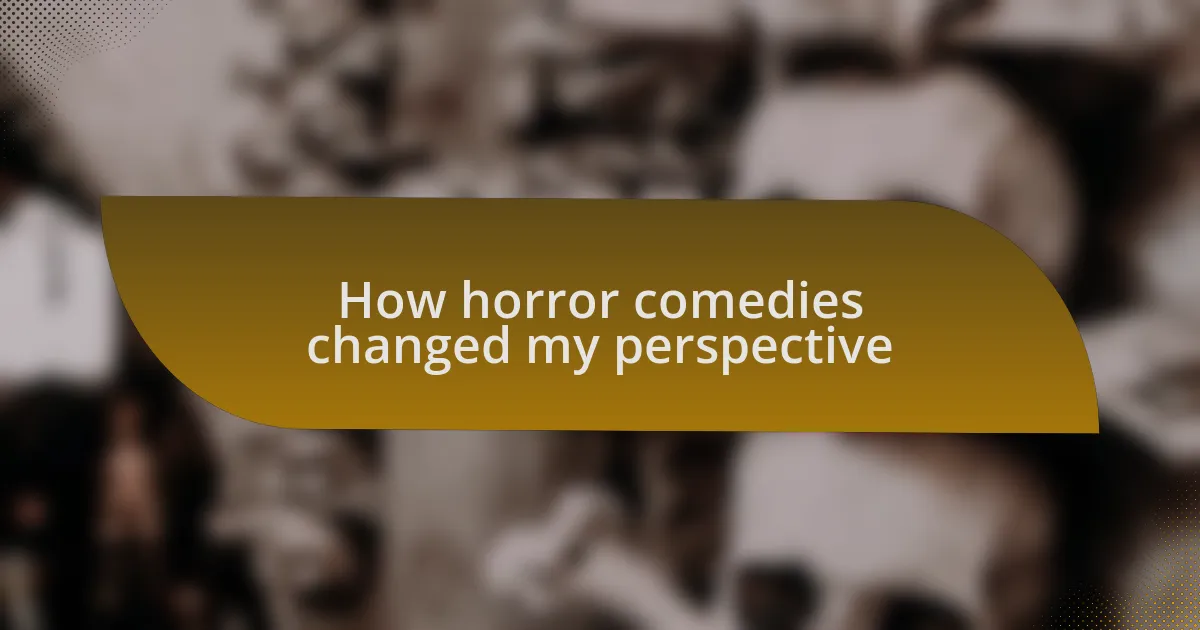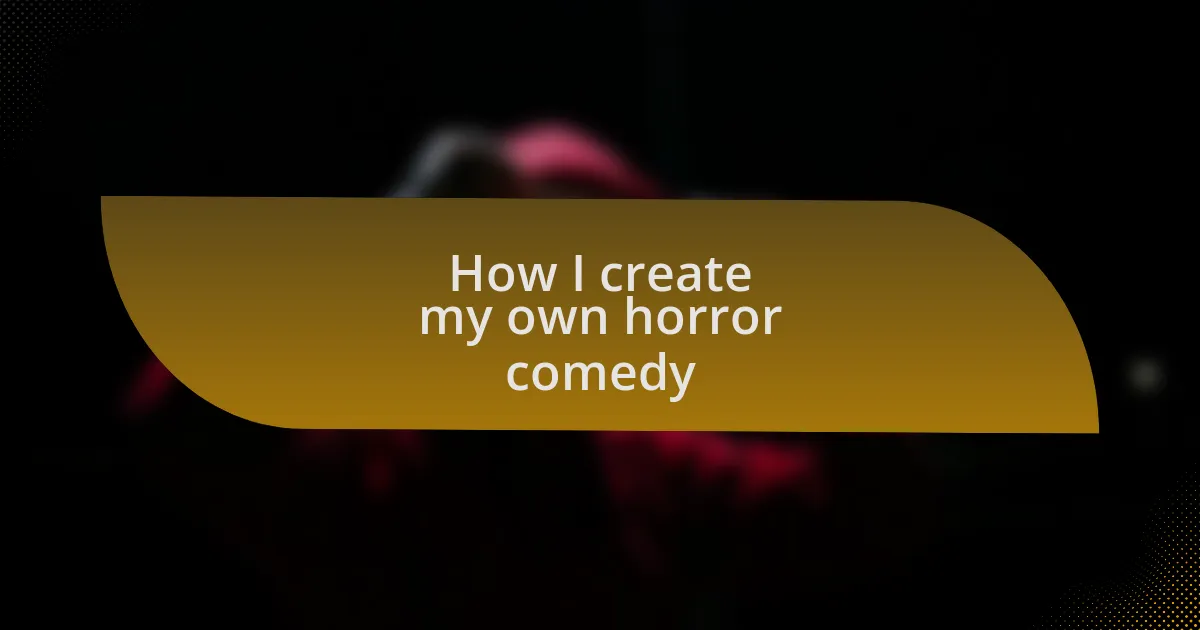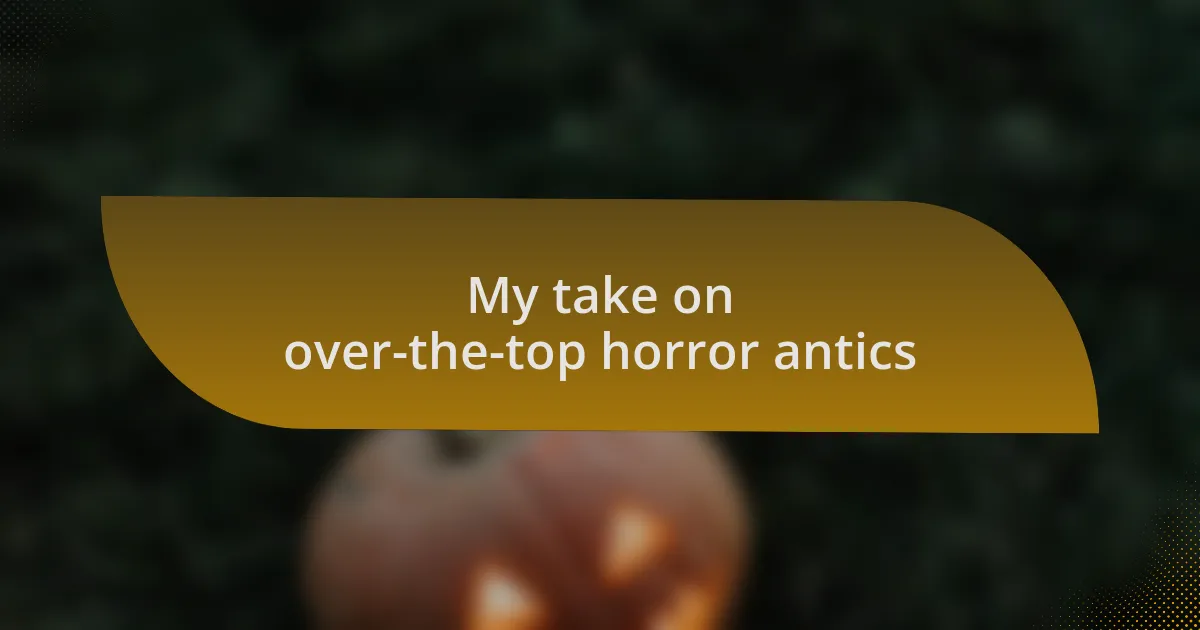Key takeaways:
- The horror comedy genre uniquely blends fear and laughter, allowing viewers to confront fears humorously, as seen in films like “Shaun of the Dead” and “Tucker and Dale vs. Evil.”
- Character development and unexpected comedic elements foster connection between audiences and characters, enhancing the thrill of the narrative.
- The clever juxtaposition of horror and comedy amplifies tension and engagement, making absurd situations feel relatable and entertaining.
- Horror comedies provide a safe space to explore anxieties and build camaraderie through shared humor, transforming fear into laughter.
Author: Julian Ashford
Bio: Julian Ashford is a celebrated author known for his gripping thrillers and thought-provoking narratives. With a background in psychology, Julian skillfully weaves intricate plots that explore the complexities of the human mind and morality. His novels have been praised for their compelling characters and unexpected twists, earning him a dedicated readership. When he’s not writing, Julian enjoys hiking and exploring new cultures, often drawing inspiration from his adventures for his storytelling. He currently resides in the picturesque countryside, where he continues to craft stories that captivate and challenge readers.
Understanding horror comedy genre
The horror comedy genre is a fascinating blend where fear and laughter coexist, creating a unique viewing experience. I remember watching “Shaun of the Dead” for the first time; it had me both terrified and in stitches. It’s intriguing how the juxtaposition of horror elements, like zombies, can elicit laughter when paired with absurd humor.
In many ways, horror comedies serve as a form of catharsis. They allow us to confront our fears indirectly, providing a safe space to experience the thrill of horror while simultaneously diffusing tension through humor. When I see a character take a comedic approach to a gory situation, I can’t help but feel a sense of relief—it prompts the question: can we really find humor in the darkest of circumstances?
This genre often plays with audience expectations, using comedic tropes to subvert traditional horror narratives. Take “Tucker and Dale vs. Evil,” for instance; it turns the typical ‘killer vs. innocent’ trope on its head. It makes me wonder, do we laugh because we are scared, or are we scared because we understand the absurdity of the situation? This duality is what keeps me coming back for more, proving that horror and comedy can dance dangerously close together.
Key elements of horror comedies
The interplay of humor and horror is crucial in defining this genre. I can’t tell you how many times I’ve found myself laughing out loud during a tense moment—like when a character trips while fleeing a monster. It’s that unexpected twist that fosters a sense of camaraderie between the audience and the characters, almost as if we’re all in on the joke. Why is it that a sudden scare can double as a punchline?
Character development plays a significant role, too. In movies like “What We Do in the Shadows,” we encounter quirky, relatable characters who navigate absurd situations. There’s something refreshing about seeing familiar horror archetypes portrayed with a comedic flair, allowing me to connect with them on a deeper level. It prompts me to think: can laughter be the best defense against the terror lurking in the shadows?
Finally, visual gags and campy effects enhance the overall experience of horror comedies. For instance, I remember scenes where blood splatter is exaggeratedly cartoonish, making me chuckle instead of cringe. This deliberate absurdity draws a fine line between fear and fun, keeping us engaged while allowing for a moment of reflection. How often do we find joy in the macabre when it’s presented with a wink and a nudge? In the end, it’s this blending of elements that keeps the genre alive and enticing.
Popular horror comedy films
One film that brilliantly captures the essence of horror comedy is “Shaun of the Dead.” I vividly recall watching it for the first time with friends, laughing at the absurdity of a zombie apocalypse becoming a backdrop for a mundane pub crawl. This blend of humor and horror is a masterclass on how to take a serious situation and inject levity, drawing me in and making the thrills even more enjoyable. How often do you stumble upon a film that perfectly balances gut-busting laughter with genuine moments of suspense?
Another favorite of mine is “Tucker and Dale vs. Evil,” which flips the typical horror narrative on its head. I remember laughing uncontrollably as mistaken identities led to increasingly ridiculous situations, showcasing how the real horror can come from misunderstanding rather than the threats themselves. This film teaches us that sometimes, the scariest encounters can arise from our own assumptions. It’s this clever play on expectations that keeps me returning to horror comedies time and again.
Lastly, it would be remiss not to mention “The Cabin in the Woods.” This film is unique in its ability to comment on horror tropes while also delivering genuine scares and humor. As the plot unfolds, I found myself both laughing and cringing at how it cleverly subverts clichés, revealing the genre’s inner workings. I was left pondering: does knowing the rules of horror make it more amusing, or does it heighten the stakes? The film’s brilliance lies in how it combines humor with self-awareness, enriching the viewing experience in unexpected ways.
How horror comedies blend genres
Horror comedies expertly intertwine elements of both genres, creating a unique viewing experience filled with tension and laughter. I remember watching “What We Do in the Shadows” and being struck by how the mundane life of vampires was portrayed in such a hilarious light, blending horror’s dark themes with the absurdity of everyday situations. This fusion often leaves me both on edge and laughing, asking myself how the filmmakers manage to balance fear and humor so seamlessly.
The clever use of juxtaposition also plays a critical role in these films. In “Zombieland,” for example, the comedic rules of survival in a zombie apocalypse somehow made me feel more invested in the characters. The humor doesn’t just lighten the mood; it amplifies the stakes, making those unexpected jump scares feel even more impactful. Isn’t it fascinating how innovation in storytelling can keep us eagerly anticipating what’ll happen next?
Integrating comedic timing within scary moments can transform a film’s atmosphere drastically. I find myself laughing out loud during scenes that would typically evoke fear and suspense. In “Scary Movie,” the parodic take on famous horror scenes led me to rethink the conventions I had previously accepted as standard. It’s intriguing to see how humor can act as a sort of relief valve, allowing us to engage more deeply with horror while also underscoring its absurdity.
Personal traits that attract me
When I think about the personal traits that draw me to horror comedies, my sense of humor definitely tops the list. I’ve always been the friend who cracks jokes during scary movies, much to the dismay of some. There’s something exhilarating about laughing at what would typically unsettle me, and I find that it makes my viewing experience all the more enjoyable.
Additionally, I’m a sucker for creativity. I remember watching “Shaun of the Dead” and being impressed not just by its humor, but by how cleverly it reimagined the zombie genre. It made me appreciate the chaos of life mixed with the absurdity of a zombie outbreak. It sparked a thought: how often do we navigate our own challenges with humor to cope? This blend of creativity and humor resonates deeply with me, allowing for an exploration of themes in ways that feel fresh and unexpected.
Another trait that resonates with me is a sense of curiosity. I love exploring the ways horror comedies upend traditional narratives. Each film offers a unique take, and I find myself wondering about the thought process that leads to their creation. For instance, in “Tucker and Dale vs. Evil,” the twist on the typical “killer” trope made me reflect on our assumptions about characters in horror films. It’s a joy to see how humor can illuminate the darker aspects of storytelling, and I relish every moment of that journey.
My favorite horror comedy moments
One of my all-time favorite moments in horror comedies happens in “What We Do in the Shadows,” particularly when the vampires struggle with modern technology. Watching these ancient beings grapple with tasks like ordering delivery or using a computer had me in stitches. It made me think about how some situations, which could typically be terrifying, can become hilariously absurd when viewed through a comedic lens.
Another standout moment comes from “Zombieland,” notably the scene where the characters develop their own rules for survival. The humor in rules like “Cardio” being number one struck a chord with me. It’s fascinating to blend practical advice with humor, isn’t it? I found myself chuckling, yet reflecting on how taking a light-hearted approach can sometimes make even the most perilous situations feel manageable.
Then there’s the iconic “Ghostbusters” scene where the team tries to capture a ghost in the hotel. The way they juggle fear and humor, especially as they hilariously underreact to the supernatural chaos, is pure gold. I often ask myself why moments like these resonate so strongly with me. Perhaps it’s because they remind me that laughter can disarm fear, offering a fresh perspective in even the most daunting places.
Why I appreciate horror comedies
What I appreciate most about horror comedies is their unique ability to juxtapose fear and laughter. I remember watching “Shaun of the Dead” for the first time and laughing out loud during scenes that should have been terrifying. This blend of emotions really struck me; it felt like an invitation to explore my anxieties while simultaneously releasing them through humor.
I find that horror comedies often provide a safe space to confront my own fears. For example, I once watched “Tucker and Dale vs. Evil” with friends who were terrified of the typical slasher movie tropes. Instead of cowering in fear, we found ourselves in stitches as the misunderstandings piled up. It was a great reminder of how these films can create camaraderie, turning anxiety into shared laughter.
Moreover, there’s something deeply satisfying about the clever writing and absurd scenarios that create memorable moments. Take “The Cabin in the Woods,” for instance. Each twist not only made me giggle but also got me thinking about horror tropes in a new light. Why is it that I could appreciate the clever commentary while also feeling that rush of excitement? It’s this duality that keeps me coming back for more.



